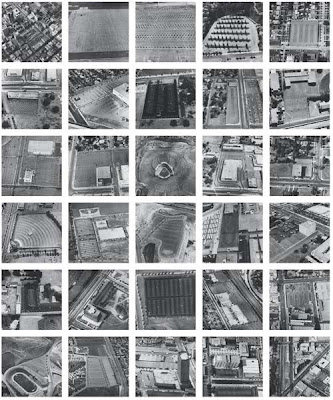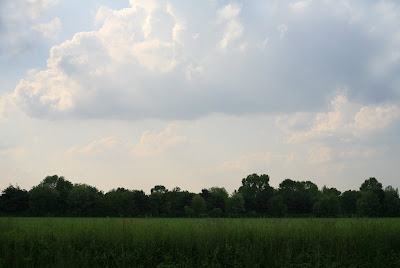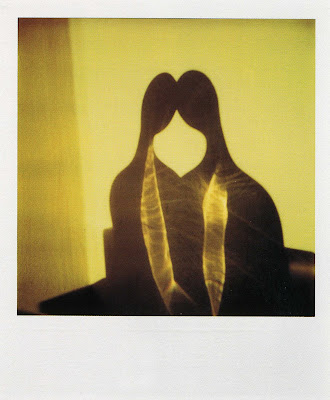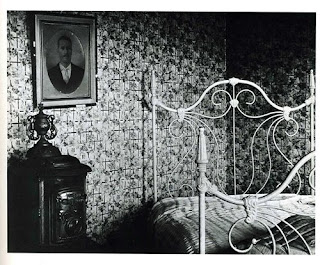Gallery Picks: June 2009International Center of Photography1133 Avenue of the Americas at 43rd Street
New York, NY 10036
Avedon Fashion: 1944-2000Richard Avedon (1923–2004) revolutionized fashion photography starting in the post-World War II era and redefined the role of the fashion photographer. Anticipating many of the cultural cross-fertilizations that have occurred between high art, commercial art, fashion, advertising, and pop culture in the last twenty years, he created spirited, imaginative photographs that showed fashion and the modern woman in a new light. He shook up the chilly, static formulas of the fashion photograph and by 1950 was the most imitated American editorial photographer. Injecting a forthright, American energy into a business that had been dominated by Europeans, Avedon's stylistic innovations continue to influence photographers around the world.
This exhibition will be the most comprehensive exploration to date of Avedon's fashion photography during his long career at Harper's Bazaar, Vogue, The New Yorker, and beyond. Working closely with The Richard Avedon Foundation, ICP curator Carol Squiers and guest curator Vince Aletti will present new scholarship on the evolution and extraordinary, ongoing impact of his work. The exhibition will feature more than 200 works by Richard Avedon, spanning his entire career, and will include vintage prints, contact sheets, magazine layouts, and archival material.
Avedon Fashion @ ICPDanziger Projects534 West 24th Street
New York, New York 10011
LocationThe exhibition "Location" looks at some of the many ways the concept of location in photography differs from "landscape". Like a photographic portrait, a photograph of a location can never be entirely objective. The time, light, vantage point taken by the photographer, and degree to which the photographer intervenes with the location all come to bear on the final product. By this definition, the location photograph is a conceptual act.
In this exhibition the idea of location is broken into four separate categories. In the first, exemplified by the photographs of Scott Peterman, Len Prince, and Beate Gutschow – a traditional landscape or cityscape is revisited and reinterpreted by the artist. This can be as straightforward and post-modern as Peterman and Prince's re-photographing of iconic places or as untraditional as Gutschow's computer based photographic re-imaginings of 18th century landscape painting.
The second category deals with the juxtaposition of art and interior location – handled in a relatively objective way by the Italian architectural photographer Alberto Narduzzi – whose shot of the lobby of the Byblos Art Hotel near Verona presents a startling look at a luminous Alladin's cave of art; and in a highly manipulated way by the Cuban-American Abelardo Morell - whose camera obscura pictures conjoin interior and exterior in a brilliant and original conceptual way.
The third category deals with invention, intervention, and photographic manipulation. Jack Pierson cuts and arranges chunks and scraps of photographs to create photomontages bursting with a sense of location often truer to the spirit of the place photographed than any individual photograph could be. Justine Kurland takes a different approach bringing a cast of "actors" into her location where she creates vivid and realistic vignettes of imagined scenarios. Susan Derges creates photograms in nature, taking large pieces of color photographic paper into Devon's River Taw and flashing the paper and freezing the moment as water and foliage stream by in the river's current.
Finally Melanie Schiff and Christophe Maout explore the relationship between man and nature, past and present, and how civilization (or the lack of) alter the natural location - in Schiff's photographs looking at the flowering graffiti that decorates a hidden skate pipe at the base of Mount Baldy in Southern California; and in Maout's work - contrasting the natural foliage that manages to still exist in a big city to Parisian modernist architecture.
Location @ Danziger ProjectsDeborah Bell511 West 25th street
New York, New York 10001
Sid Kaplan: Urban StonehengeDeborah Bell Photographs is proud to announce the gallery’s second exhibition of photographs by Sid Kaplan (American,b. Bronx 1938). Entitled URBAN STONEHENGE, this ongoing series will feature dramatic images made from the 1980s to the present depicting the monumental canyons of New York City’s streets at sunset. Kaplan’s eye is distinguished by graphic plays of light and dark tones, sharp angles and a tendency toward high contrast images. His pictures are arresting in their formal arrangement, and exciting for their visceral qualities of light and dark as rendered in traditional gelatin silver prints. Kaplan, a master photographer and printer, has been on the faculty of the School of Visual Arts in Manhattan since 1972.
Kaplan’s legendary career and influence as a printer for other photographers, and as a teacher, is well known. His own work, however, has been seen only in intervals over the last few decades. Kaplan has been called “the greatest printer in the world” for good reason. Not only does this accolade manifest itself in his own work, but it refers to his long reputation as a printer for Robert Frank, Weegee, W. Eugene Smith, Ralston Crawford and Allen Ginsberg, among many others.
Urban Stonehenge @ Deborah Bell GalleryYossi Milo Gallery525 West 25th Street
New York, New York 10001
Vector PortraitsYossi Milo Gallery is pleased to announce an exhibition of color photographs by Andrew Bush, entitled Vector Portraits. The exhibition will open on Thursday, April 23 and close on Saturday, June 27, with a reception and book signing by the artist on Thursday, April 23 from 6:00 to 8:30 pm. This will be the artist’s first solo exhibition at the gallery.
Begun in 1989, Andrew Bush’s series Vector Portraits was taken while the artist drove the city streets and freeways of Los Angeles. Either stopped in traffic or traveling at speeds of 20 to 70 miles per hour, the artist took portraits of other drivers using a medium-format roll-film camera and flash attached to the passenger side door of his car. Extended titles note particulars of speed, location or time with scientific precision while leaving other details unclear, such as “Man traveling southbound at 67 mph on U.S. Route 101 near Montecito, California, at 6:31 p.m. on or around Sunday, August 28, 1994”.
The photographs capture subjects in the ambiguous combination of private and public space created by a “private room on wheels.” The drivers are either alone in their vehicles lost in thought, or with passengers, revealing the dynamic between families, couples or friends. An examination of people and their cars in a city famous for its car culture, the series addresses personal privacy and challenges our definition of public space.
Andrew Bush’s work is held in the collections of institutions such as the Metropolitan Museum of Art, New York; the Victoria & Albert Museum, London; the Museum of Fine Arts, Houston; and the Museum of Modern Art, New York. He completed his Masters of Fine Arts in Photography at Yale University in 1982. Born in 1956 in St. Louis, Mr. Bush currently lives and works in Los Angeles. In 2008, Yale University Press published the book Drive, which includes an interview of the artist by Jeff L. Rosenheim, a curator of photographs at the Metropolitan Museum of Art, New York.
Vector Portraits @ Yossi Milo
 girl killed on a bicycle. 1975
girl killed on a bicycle. 1975 drunk driving accident. 1977
drunk driving accident. 1977 three men killed eluding police. 1989
three men killed eluding police. 1989




 gradient blue sky
gradient blue sky










 Roadside Horizon
Roadside Horizon





